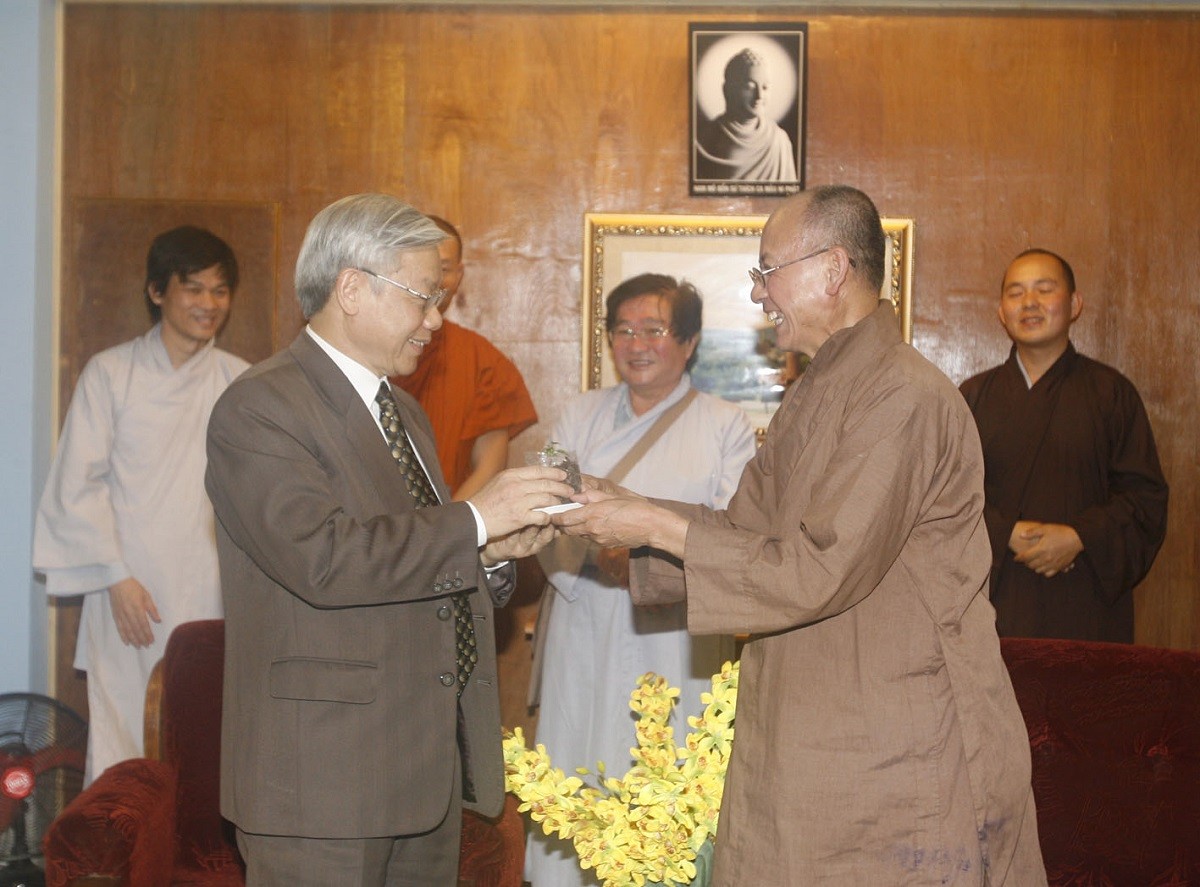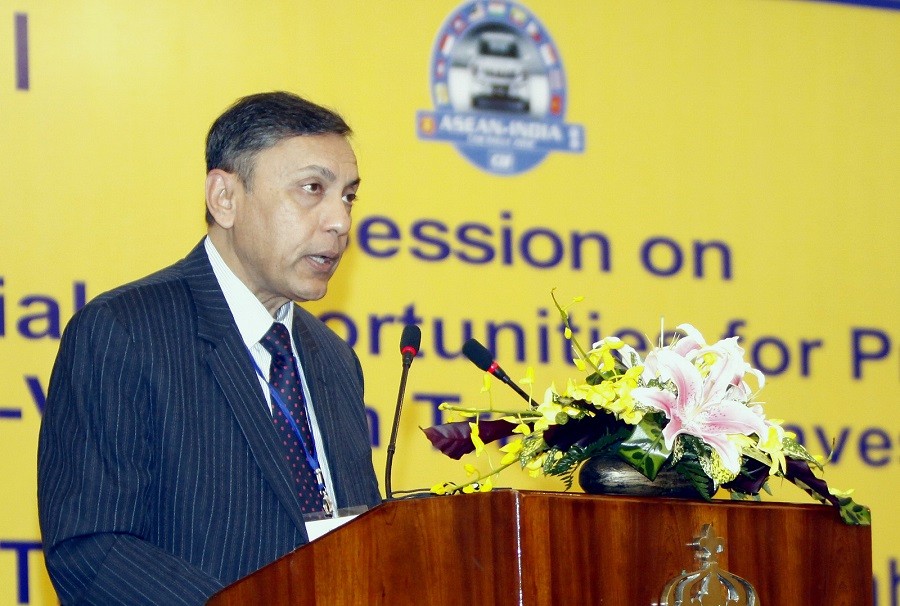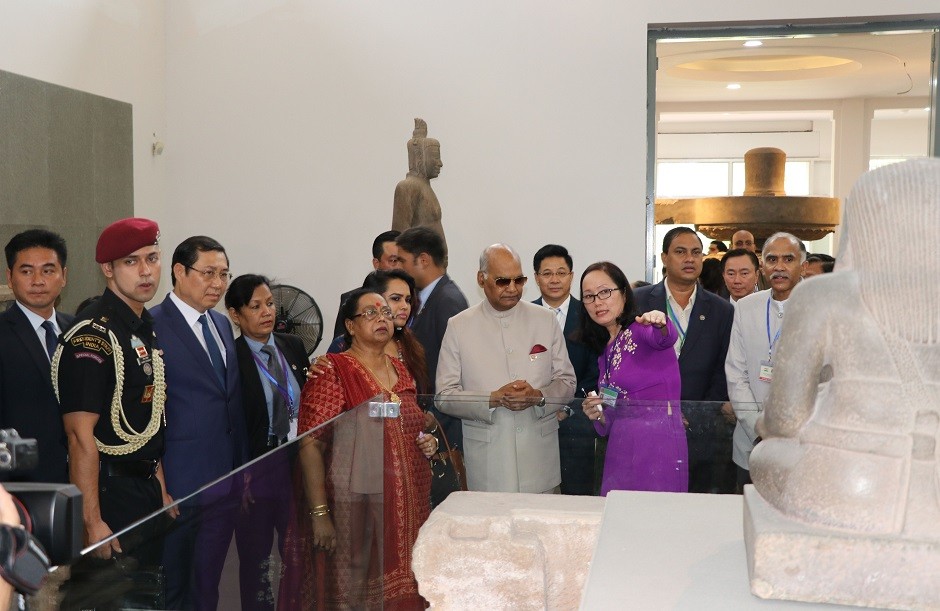
Deepening ancient civilizational bonds between Vietnam and India
Latest
 |
| Chairman of the National Assembly of Vietnam Nguyen Phu Trong visited Vietnam Phat Quoc tu (Vietnam Bouddha Bhumi Vihara), the first Vietnamese temple in Bodh Gaya on February 26, 2010. (Photo: VNA) |
As we celebrate fifty years of the establishment of diplomatic relations between India and Vietnam (1972-2022), we can take pride in the fact that our two countries have transformed themselves into modern and prosperous societies.
Vietnam has risen like a phoenix from the ashes of the American War and is today one of the ASEAN tigers. India has emerged as the fastest growing large economy following the economic liberalization program undertaken from the early 1990s.
As our economies have grown, so has our cooperation. Today it covers a wide spectrum of human endeavour ranging from defence and security to economic and cultural exchanges and energy. We have a similar perspective on several global and regional issues. The quality of the relationship is evident from the fact that the two countries extended help to each other even as they were both suffering grievously during the disastrous COVID-19 pandemic. The late Prime Minister Pham Van Dong had once characterised the relationship as blemish-free, ‘like a cloudless sky’. Indeed, sky is the limit for our cooperation.
Though the foundations of our contemporary relationship were laid by Pandit Jawaharlal Nehru and President Ho Chi Minh, two stalwarts who struggled for the liberation of our countries from the yoke of foreign aggression and colonialism, these bonds have been further strengthened by generations of successive leaders in both countries. The relationship has been elevated to a Comprehensive Strategic Partnership by Prime Ministers Narendra Modi and Nguyen Xuan Phuc in 2016.
 |
| Indian Ambassador to Vietnam Ranjit Rae at the seminar on potential opportunities for boosting Indo–Vietnam Trade Investment on December 6, 2012. (Photo: VNA) |
I spent three years in Vietnam as the Indian Ambassador, between 2010 and 2013 and had wonderful memories of this beautiful country. The beauty of the tree-lined capital city, Hanoi and the diverse hues that it takes on during the four seasons; a city of lakes and the mighty Red River, of pagodas and temples; a city that is teeming with life and motorcycles, of elegant graceful people. I recall the energy of Ho Chi Minh City, the business hub of Vietnam with the great river Mekong flowing close by, buzzing with human activity; the grace and laid back style of Hue, the erstwhile imperial capital; and the magic of Da Nang and its environs, in particular Hoi An and the world heritage site of My Son, home to ancient monuments of the Cham civilization.
Though India and Vietnam established a Comprehensive Strategic Partnership only a few years ago, our relationship stretches back into antiquity. It was forged by traders and travellers, merchants and monks that sailed along the maritime routes between our two countries. They exchanged not only material goods and commodities but also ideas, cultures and philosophies. You see evidence of this wherever you travel in Vietnam. Vietnam is dotted with beautiful Buddhist pagodas and temples throughout the country that represent a fascinating fusion of diverse cultures in their architecture, modes of prayer and worship.
Both the Mahayana and Theravada traditions are flourishing in Vietnam and it was my privilege to visit several temples during my tenure there. At the Phat Tich Pagoda in Bac Ninh province I had the opportunity to interact with representatives of the Buddhist Sangha. I had the privilege of planting a Bodhi tree in the grand Bai Dinh Pagoda in Ninh Binh province. On several occasions I visited the Quan The Am pagoda near Da Nang city; and of course, the Tran Quoc Pagoda on the West Lake in Ha Noi where our first President Dr Rajendra Prasad had planted a Bodhi Tree that has grown tall, resilient and strong like the relationship between our two countries and peoples. India is privileged to have trained a large number of Buddhist monks from Vietnam in the institutions of higher learning in India.
The philosophy of peace and compassion, non-violence and loving kindness preached by the Buddha more than two thousand years ago spread in the four directions as depicted by the roaring lions of Emperor Asoka’s Lion Capital of Sarnath, which is today India’s national emblem.
A symbol of this Buddhist link between India and Vietnam is the revered monk Thay Huyen Dieu, who has established beautiful Vietnamese monasteries in Lumbini, Nepal, the birthplace of the Buddha and in Bodh Gaya, India, the place of his enlightenment. I recall his visit to our Embassy in Ha Noi during the summer months over a decade and a half ago. The lotus was in bloom in Ha Noi and the trees were covered with beautiful purple flowers. We had invited the monk to our Embassy on Tran Hung Dao Street since several of our Vietnamese colleagues wanted to receive his blessings. We had prepared a basket of fruits to offer to the dignitary. The Venerable monk arrived at our Chancery accompanied by two attendants and spent some time with us at the Nehru - Ho Chi Minh hall. This was the beginning of a friendship that continues to this day. After Vietnam, I was posted to Nepal and visited Thay Huyen Dieu at the Vietnamese monastery in Lumbini on many occasions. The Vietnamese monastery in Bodh Gaya also built by him is visited by scores of people from Vietnam, from ordinary folk to the rich and powerful who wish to absorb the energy that exudes from this serene place of pilgrimage.
Thay Huyen Dieu passionately believes that the message of peace, compassion, non-violence and loving kindness, the Middle Path, which emanated from India and resonated throughout the world is relevant in our contemporary times, more than ever before. As our world is beset by multiple crises, from climate change to violent conflict, humankind needs to pause and reflect. A lifestyle of excessive material consumption is no longer sustainable by our planet. As Mahatma Gandhi said, there is enough for every person’s needs, not for every person’s greed.
 |
| Indian President Ram Nath Kovind and his wife visited the Da Nang Museum of Cham Sculpture during his State-level visit to Vietnam from November 18-21, 2018. (Photo: VNA) |
Along with Buddhism, central Vietnam has also been a custodian of an ancient Hindu tradition that was widely prevalent several centuries ago in the Cham region, as demonstrated so vividly in the World Heritage Site of My Son. Shiva was the presiding deity of the Champa civilization with many temples in My Son dedicated to Cham Kings associated with divinities. For instance, the main temple in My Son is dedicated to Bhadresvara, which is a combination of the name of King Bhadravarman with ‘eshvara’ or Shiva. Just as India is privileged to work for the restoration of Ta Phrom temple at Angkor Wat, the Wat Phu in Laos and temples in Bagan, Myanmar, India is deeply engaged in the preservation of the monuments and temples of My Son.
Even as India and Vietnam are engaged in strengthening their cooperation to meet contemporary political, security and economic challenges, both countries are also further deepening the ancient civilizational bonds that represent an abiding link between our two peoples.













